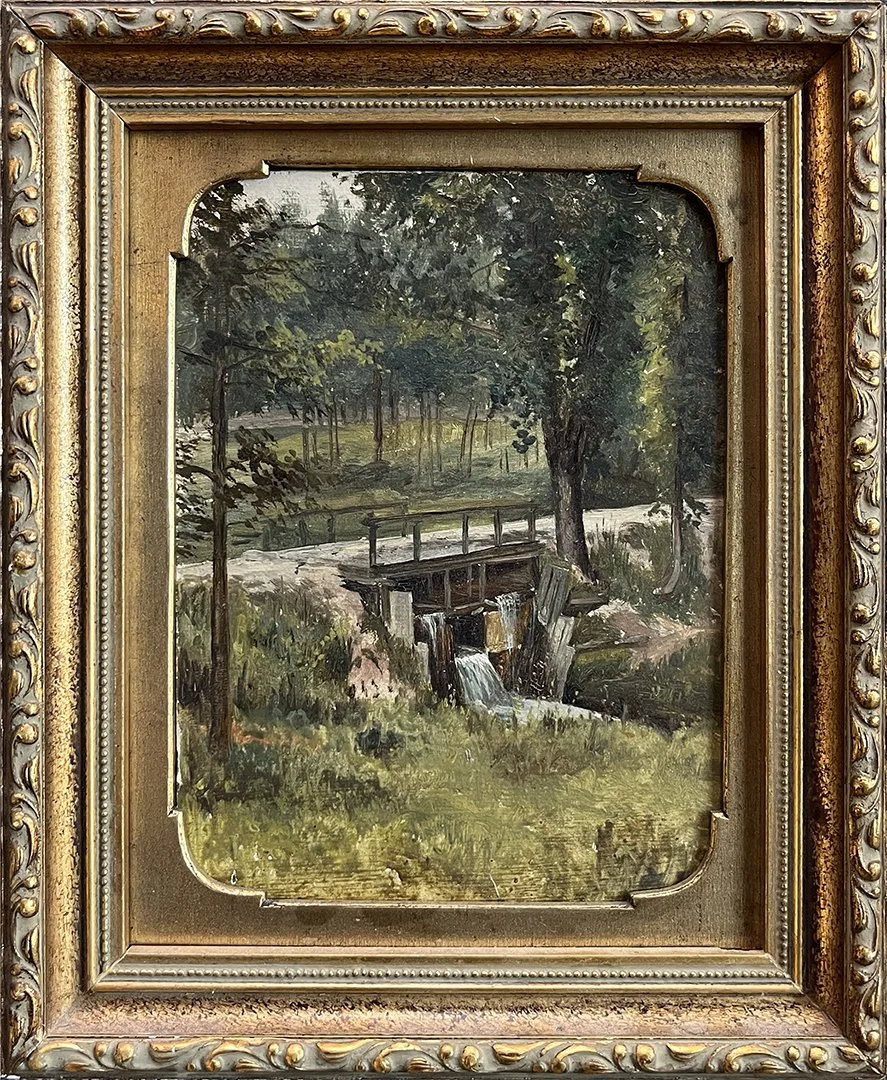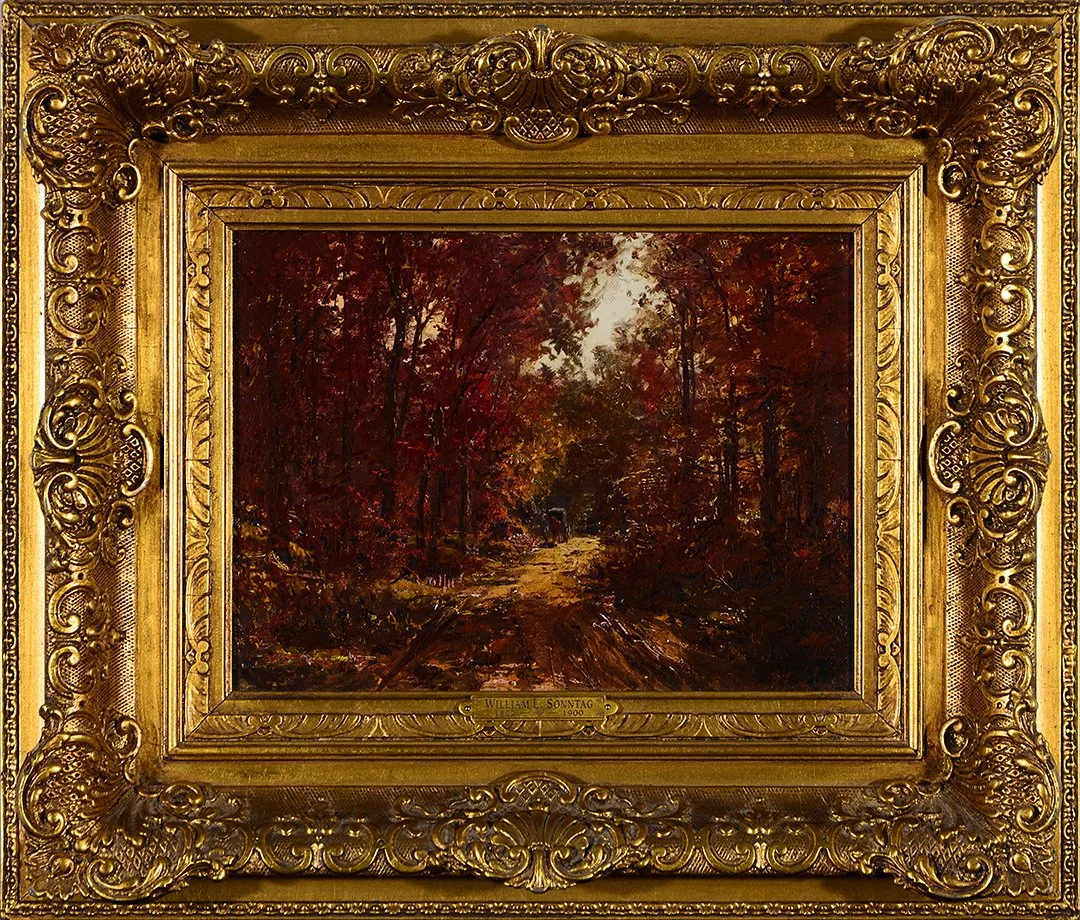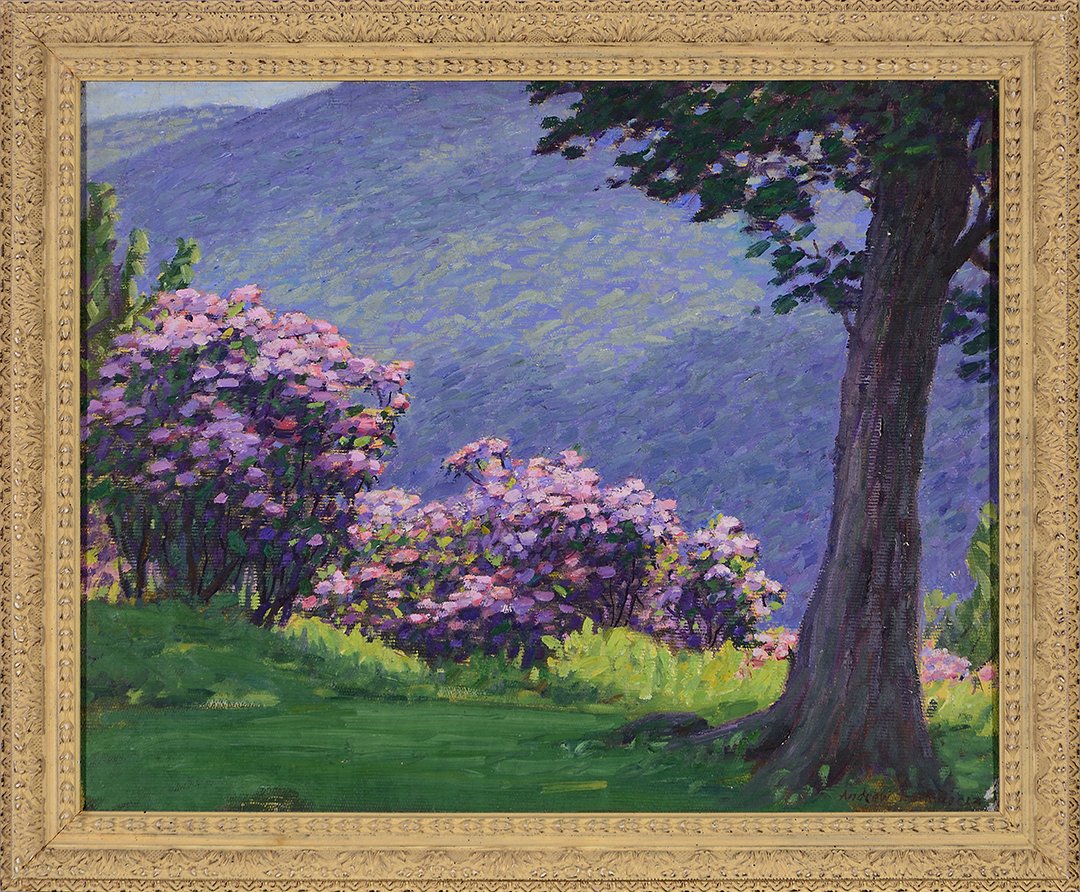Frank Selzer
Frank Selzer
Bridge
Oil on Board
8 x 6 inches
Estate Stamp on Reverse
ID: DH4216
Selzer, Frank C. (1849-1916)
Frank C. Selzer, 68 years old, artist, died at 5 o’clock Monday morning at his home, 117 Ann Street. He had been ill but a week, of pneumonia. He was one of the most talented and picturesque of the old-time residents of the city. Samples of his work as an artist are widely scattered through the homes of Grand Rapids. His paintings of animal life, especially sheep and cattle, are highly prized and form some of the most valuable subjects in numerous art collections of note.
Mr. Selzer was born in Gleeson, Darmstadt, Germany, May 4, 1849, and came to this country with his parents when he was 9 years old. For a time he lived in St. Louis, Missouri. In 1871 he was married to Miss Fanny Mills of Burlington, Wisconsin, and came to Grand Rapids in 1878. He had lived here continuously since.
Mr. Selzer developed his technique as an artist without attending an art school. For years he had been a close student of all the important art galleries of the United States and Europe. He executed many of the beautiful hand-painted pieces of furniture produced by the Oriel and Berkey & Gay factories of this city. He also conducted art classes for some time, and until recently was a member of the Grand Rapids Art Association.
For a number of years he was recording secretary and an active member of the Spiritualist Church of Truth. He was always active in matters of public welfare, and before the extreme northern section of the city was taken in by Grand Rapids he served on the district school board.
Submitted by Edward P. Bentley, Art Researcher and Collector from Greenville, Michigan, who added:
"According to family records: The Selzer family owned a carriage business in St. Louis, Missouri, so many of Frank’s paintings are also found there. He was to live there for fourteen years, moving to Grand Rapids in 1871. Known as a specialist in animal painting, Selzer did works painted in a convincing way as recounted in Albert Baxter’s History of the City of Grand Rapids (1891), in which he remarked of Selzer’s paintings of sheep, that “it almost seems as if the wool might be pulled, so natural appears the fleece.”





